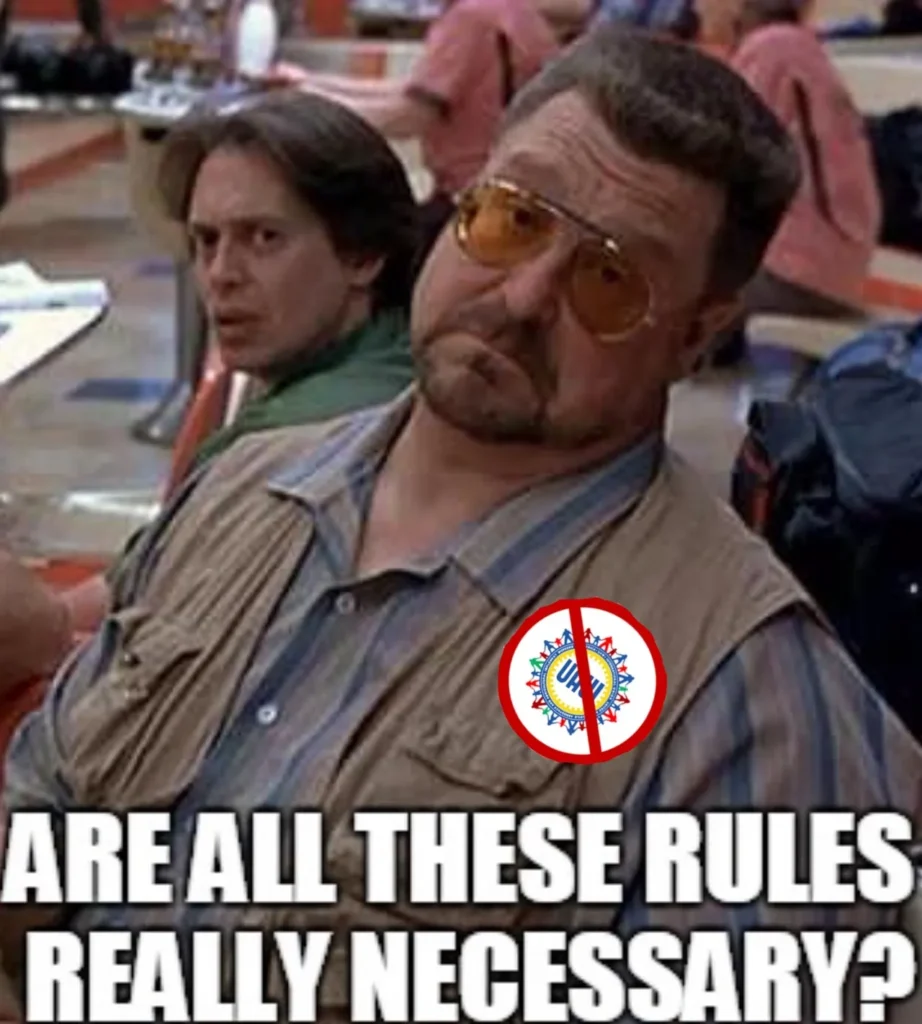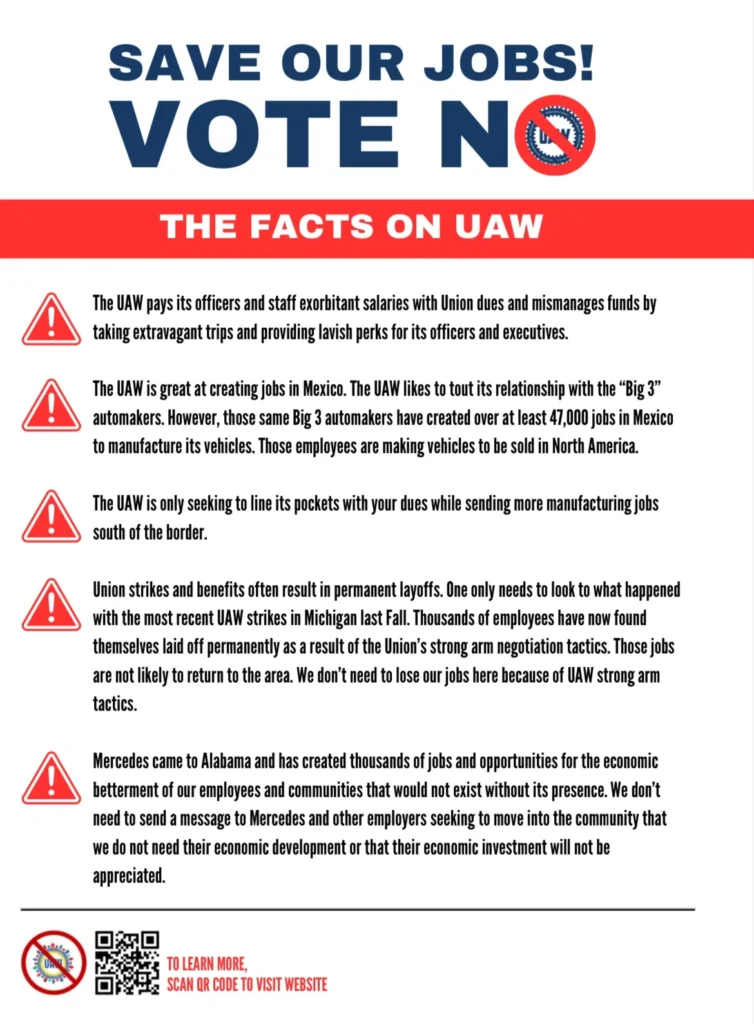Union Work Rules Are Unnecessary
March 7, 2024

Union workplace rules are normally part of a bargaining agreement. These agreements have a set of workplace rules that contain all sorts of categories and classifications of different employees that the union claims protect the employees. For example, the Ford/UAW agreement is over 2000 pages long. However, these cumbersome work rules have unintended consequences that contribute to employee segregation, decreased efficiency, and potential abuse by union leaders. Here are some negative aspects associated with these outdated and burdensome union workplace rules:
1. **Rigid Job Classifications:**
Union-negotiated job classifications can lead to rigid structures that categorize workers into distinct classes based on roles and seniority. This segregation may limit the flexibility of the workforce, making it challenging to adapt to changing demands or utilize employees’ skills efficiently.
2. **Seniority-Based Systems:**
Unions advocate for seniority-based systems, where job preferences, promotions, and layoffs are determined by the length of service rather than merit or competence. While seniority can provide job security, it may hinder the promotion of skilled or motivated workers, leading to inefficiencies and discouragement among the workforce.
3. **Lack of Meritocracy:**
Union rules emphasizing seniority over meritocracy can create an environment where individual contributions and hard work are not adequately rewarded. This may result in reduced motivation and job satisfaction, impacting overall efficiency and innovation within the workplace.
4. **Limited Flexibility:**
Strict union rules may limit the ability of employers to implement changes swiftly, such as adjusting work hours, introducing new technologies, or reorganizing tasks. This lack of flexibility can impede efficiency and hinder a company’s ability to stay competitive in a dynamic market.
5. **Resistance to Performance-Based Evaluation:**
Some union rules may resist the implementation of performance-based evaluations or merit-based pay structures. This can contribute to complacency within the workforce, as employees may feel that their efforts are not adequately recognized or rewarded.
6. **Abuse of Power by Union Leaders:**
The concentration of power in the hands of union leaders, particularly in a system where leadership positions are not subject to regular performance evaluations, can create opportunities for abuse. Instances of corruption, nepotism, or favoritism may occur, eroding trust within the union and leading to exploitation of union resources for personal gain.
7. **Inequality Among Workers:**
Segregation resulting from union rules can lead to inequality among workers, creating a hierarchy based on seniority or job classification. This division may breed resentment and hinder collaboration among employees, negatively impacting the overall work environment.
8. **Resistance to Change:**
Union rules may make it challenging for organizations to implement necessary changes or improvements due to the need for extensive negotiations. This resistance to change can hinder innovation, making it difficult for companies to adapt to evolving market conditions.
In summary, the rigidity of workplace rules contributes to employee segregation, decreased efficiency, and potential abuse of power by the local union bosses. Mercedes does not need another layer of bureaucracy when trying to run a very technical and complex production facility that produces some to the most advanced automobiles on the planet. It is in everyone’s best interest to allow the company and employees to collaborate daily to solve problems and get the job done without having to consult a cumbersome set of work rules to make sure they are not violating some part of the agreement. Just another reason Mercedes does not need a union.



